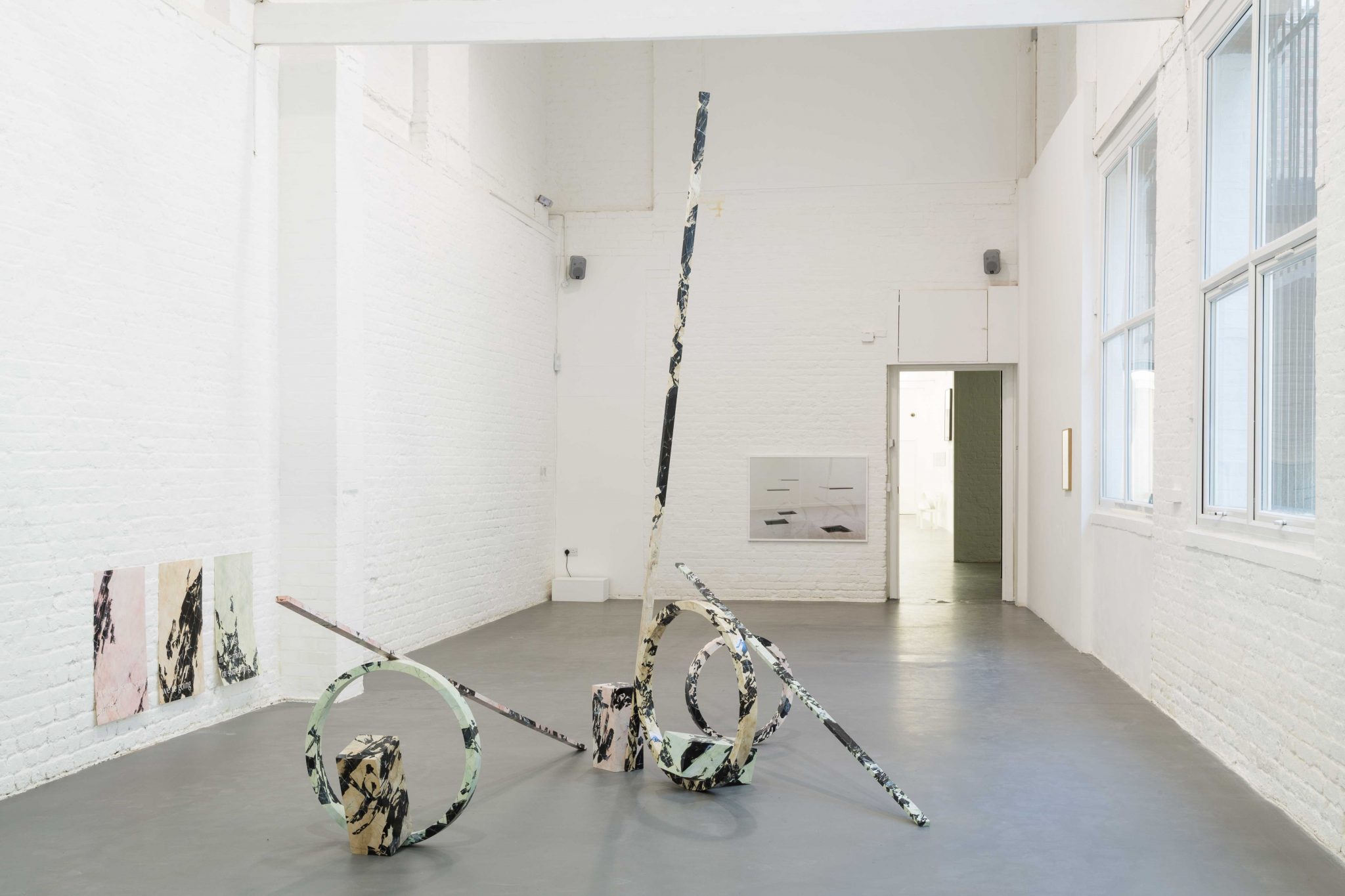And so to the third and final instalment – or ‘movement’, to use the exhibition’s own, symphonic metaphor – of A House of Leaves, David Roberts Art Foundation’s ambitious, six-month- long unveiling of its new premises that’s meant both as a showcase for its collection and as a kind of deconstruction of the role of the museum. Except that, actually, it isn’t really the final installment at all, because there’s also going to be – in a slightly ungainly shift from musical to literary terminology – a brief ‘epilogue’, featuring various, more permanent interventions to the building’s physical structure. Though, in fact, most of these ‘epilogue’ works are already installed – scattered in among the temporary exhibition pieces, yet at the same time officially meant to be somehow distinct from them. Confused? You certainly will be.
The starting point, at least, is simple enough. As with the two previous ‘movements’, the idea is to expand upon a key work in the collection – in this case Pierre Huyghe’s Silent Score (1997–), in which a recording of John Cage’s notoriously silent 4’33” (1952) has been transcribed onto sheet music, so that the unplanned and indiscriminate background noises ironically achieve a kind of prescriptive, canonical status as musical notation. It’s a typical Huyghe piece: extremely arch, yet also opening up to a deeper contemplation of ideas to do with experience and reenactment.
From there, though, things quickly become much more convoluted. The theme is ‘the museum as score’; or alternatively, ‘the museum as a stage’– either way, it certainly involves a lot of consulting the extensive programme notes. And it’s terribly distracting, having to constantly distinguish which of the 30-odd pieces belong to which half of the exhibition. That Bob Law drawing, for instance, depicting empty space; or nearby, the Cold War- referencing bronze mask by Simon Starling: both part of the temporary display. But the hypnotic film opposite, by Babette Mangolte, of a super- slo-mo dancer: one of the interventions (aka, rather portentously, ‘the embedded’). Not that such distinctions much matter, perhaps, when the declared rationale of the exhibition is to create something ‘free, uncertain, non-productive’.
In other words, the whole thing’s allowed to be totally nebulous and incoherent. And certainly the strongest strand of works suggest this sense of things not quite cohering, of falling apart or out of sync, of settling into their own, individualistic shape – from Martin Creed’s differentially ticking metronomes (Work No. 180 (Largo, larghetto, adagio, andante, moderato, allegro, presto, e prestissimo), 1995–2004), through Mr III (2010), the fragmented self-portrait that Kris Martin drew without looking at the paper, to Katinka Bock’s twin videos of smoke seeping spookily from an abandoned house (Raus I & Raus II, 2006). And there are some great pieces, too, around the specific theme of anomalous translations and transcriptions – particularly Jonathan Monk’s hilarious, Chinese-whispers chain, Edgware Road (Translation Piece) (2005), in which a Carl Andre quote mutates its way across multilingual London.
Yet, overall, the sense is of a show that leads off in too many different directions, that feels stuffed full of too many divergent ideas. It’s hard to conceive, to take just one example, how Lorna Simpson’s pointed deconstructions of race and gender relate to Huyghe’s initial work. Presumably, the original plan was for an exhibition that felt light and open-ended, that conveyed a sense of spontaneity and indeterminacy – a sort of multivalent, free-jazz kind of vibe. Instead, it ends up feeling slightly cold, over-conceptualised, oddly inert, with too many works sadly seeming atomised or adrift.
This article was first published in the April 2013 issue.
